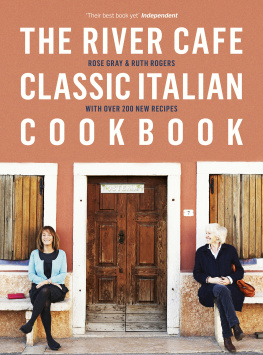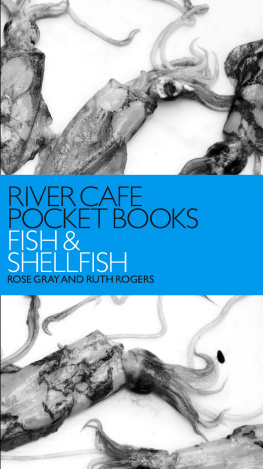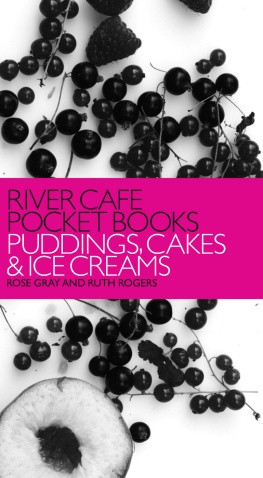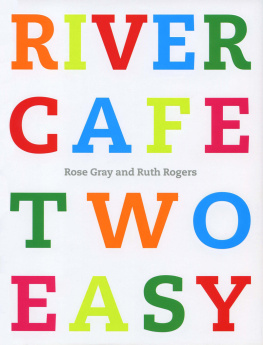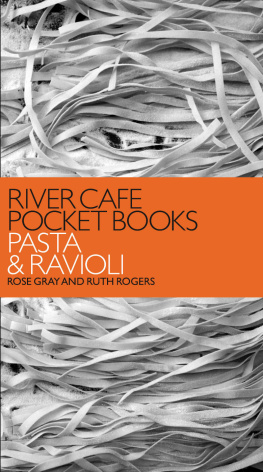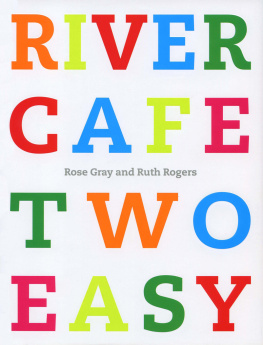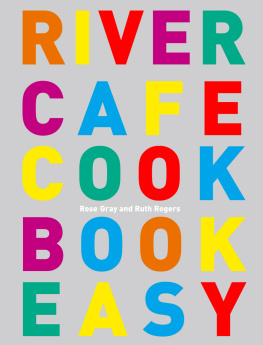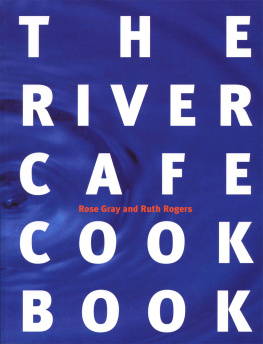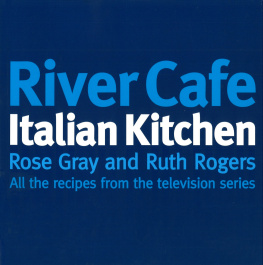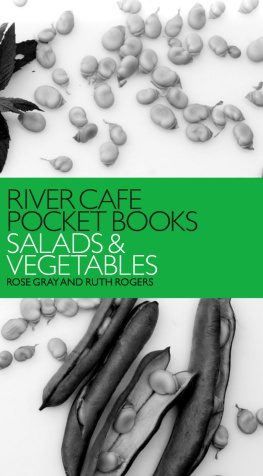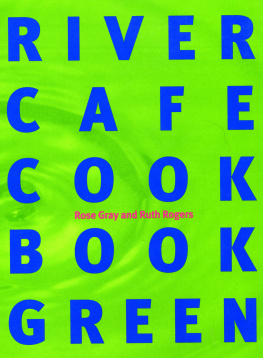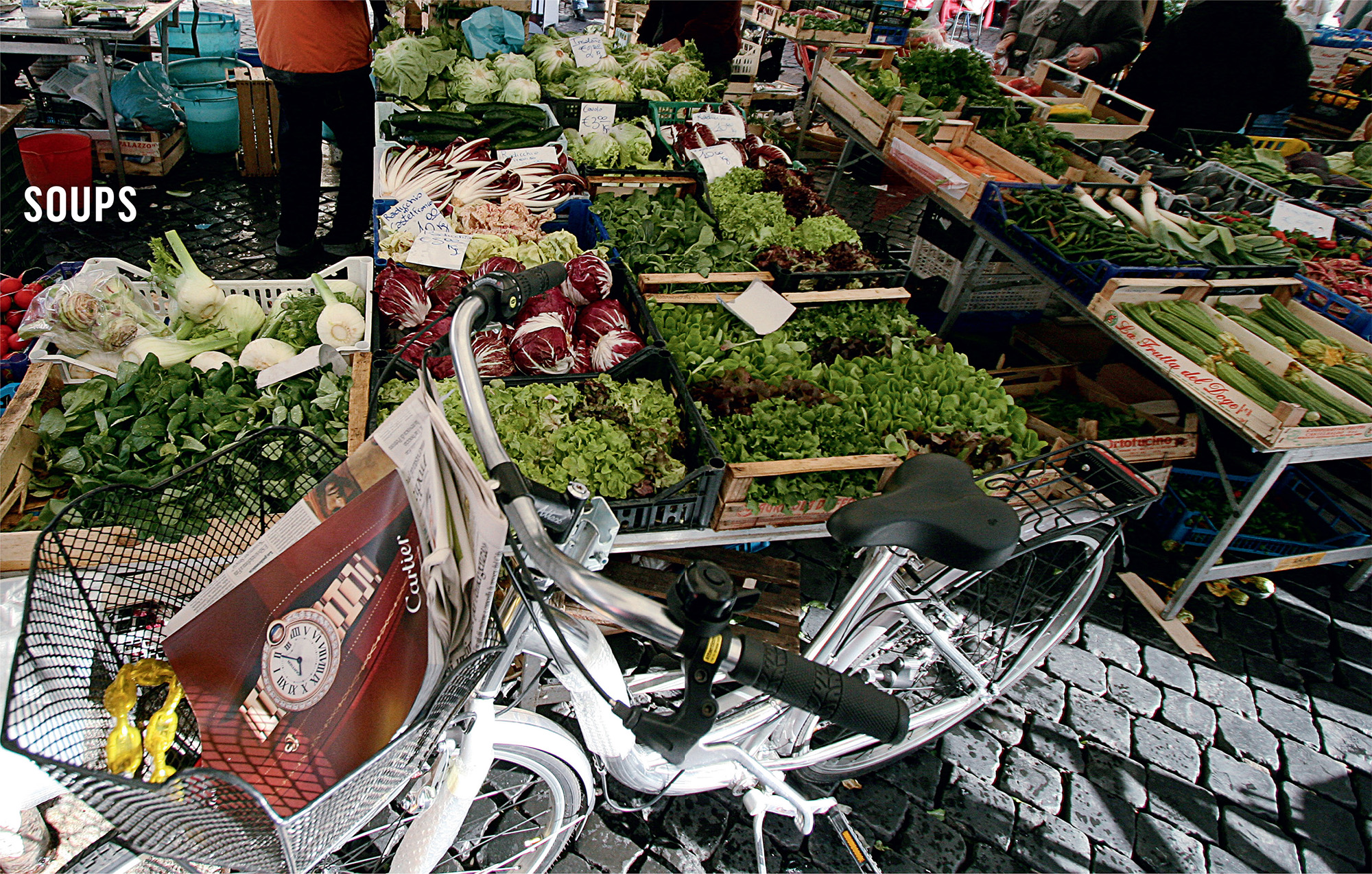CONTENTS
LIST OF RECIPES
INTRODUCTION
We have had some extraordinary opportunities to visit Italy during the twentytwo years since we started the River Caf. We love the architecture of the great cities, the landscapes, the sea and the mountains, but what we love most is the instinctive way food and wine play such an important part in everyday Italian life. From our very first visit, we have been inspired by the pride Italians take in their ingredients and their regional recipes. We knew then that this was the way we wanted to cook, and it is the way we still cook today.
We have travelled all over Italy, from Sicily to Piedmont, from Le Marche to Liguria, increasing our knowledge of the local specialities and classic recipes of each region. Through these journeys we have made friends with cooks, and have shared their passion for their family dishes handed down from generation to generation. These talented people have taught us about the ingredients they use, and how to follow the seasons, using locally grown produce. Simple, regional cooking that gives endless pleasure the Italian ethos. This book is the result of these encounters, which we want to share. It is our friendships with those who grow the grapes, tend the olive trees, make the wine and olive oil we use, the cheesemakers and salami producers, that have taught and inspired us.
The stallholders in the vegetable markets, whose produce changes throughout the year, have always explained to us the seasonality of what they grow and their way of making the most of what is abundant at any time. Eating in trattorias and peoples homes has taught us, better than any elaborate research ever could, how to put a salad together using raw ovoli mushrooms and rocket in the summer, and how to make a soup with just three ingredients broccoli, Lambrusco wine and garlic in the winter.
Every recipe has its memories. We remember a visit to Giovanni Manetti, the famous wine and olive oil maker from Fontodi in Tuscany. His mother made us a ribollita, a soup of bread, cabbage and chicken stock that was unlike any Tuscan ribollita we had ever tasted because of its unusual sweet flavour. It made sense when we were told that she had changed the recipe in order to best show off her sons newly pressed, peppery, very green olive oil.
There was a winters day we drove for miles up into the mountains of Piedmont behind Genoa to visit a wine dealer who wanted us to experience his grandmothers cooking. She and all the women of her family cooked for us the very delicious but frugal dishes they had survived on during the war. For three hours we sat with the men of the family in a vast, cold room, eating course after course of thick, creamy, comforting polenta, while the women stayed in the kitchen around the stove, stirring. This is where we learned how long polenta takes to cook. Every sauce we ate that day was made with wild ingredients rabbits, hares, boar with salads of wild herbs and greens.

On a trip to Puglia we slept in a bakery just so we could watch the many stages involved in the making of huge fourkilo semolina loaves throughout the night. We were astounded when we found out that these loaves used a sourdough mother base that was started in 1945 and was still alive! We felt honoured to be given a piece of this mother to take back to the River Caf, and, since that trip, we use Pugliese bread every day.
In Maremma we were introduced to a winemaker whose estate makes a delicious Pecorino cheese. As we use fresh ricotta daily to stuff our ravioli, we were interested to see how they made their sheeps ricotta, the most delicate of all ricottas. Seeing it made, and tasting the soft warm curds by the teaspoonful that day, inspired us to use this cheese in various new ways.
On a more recent trip to Italy, we took the opportunity to visit Verona, a city we both love, to take photographs for this book. We returned to one of our favourite restaurants, Al Pompiere, for it was here, on our initial trip to VinItaly (the grand annual wine fair) in 1989, that we first ate risotto Amarone. The risotto was just as we remembered it from twenty years earlier intensely flavoured with this powerful, spicy wine. When we make this risotto ourselves we use Mari Lisa Allegrinis Amarone, which we think is one of the best made in Valpolicella. Al Pompiere also specializes in local prosciutto and salami. There is lardo from Colonnata, local culatello, and the delicately soft sopressa, sweet horsemeat bresaola and mortadella. Every table is served large, carefully arranged platters of these meats, ranging in colour from pale pink to deep crimson, all prepared with great care by the chef, who presided over this domain with pride.
There are other restaurants in Italy that we always return to Piperno in Rome for artichokes alla giudia, Alla Vecchia Bettola in Florence for arista di maiale, and, in Vernazza on the Ligurian coast, Trattoria Gianni Franzi for fritto misto and pesto. Every year in November we go on a trip to Italy with our chefs from the River Caf to choose a new olive oil and taste some wine. We always make a special detour to Scacciapensieri in Cecchina to visit the woman who bakes whole fish over potatoes. When we are in Piedmont in the white truffle season, we try to have a meal at Il Giardino da Felicin in Monforte dAlba, which has an amazing view over the Barolo vineyards, and a beautiful cheese room. And in Milan we always try to discover a simple and surprising soup recipe at La Latteria.
This book is a collection and celebration of these wonderful Italian dishes. Inside you will find over 200 newly written recipes, the ones that weve been taught over the years and which mean so much to us, and those that we cook most often our personal interpretation of these recipes and a tribute to the people weve met along the way.
This is classic Italian food the traditional, regional food we love to eat when we are in Italy, the food we cook at the River Caf, and the food we cook at home for our families.
Rose Gray and Ruth Rogers, 2009
SOUPS
Zuppa, passata, minestra, minestrina, crema, pappa and brodo are just some of the words Italians use to describe what we simply call soup. Some of our favourite classic Italian soups are included in this chapter.
We find something very calming and creative about making a soup the slow steps of building it up from the soffritto, adding the vegetables, beans, potatoes, the stock or water, and watching as the consistency, flavour and fragrance develop as it cooks.
The foundation of most soups is the soffritto, a lightly fried mixture of finely chopped vegetables and herbs. Traditionally, it consists of parsley, celery, garlic, carrots and onions, but pancetta, prosciutto or speck might also be added, or herbs such as thyme, sage and marjoram. We once watched a cook in Sardinia making a minestrone she was surrounded by bowls of herbs, and added handfuls of each kind to the soffritto.
Broths or brodi are generally the basis for the soups of the north, like the one from the Val dAosta that weve included . They are light broths, achieved by simmering chicken, veal or beef with odori di cucina celery, carrots, onion and parsley for about two hours. A flavourful vegetable broth, made by boiling carrots, celery, tomatoes, onions and herbs for about an hour, can be used as an alternative to traditional meat or chicken broth.

